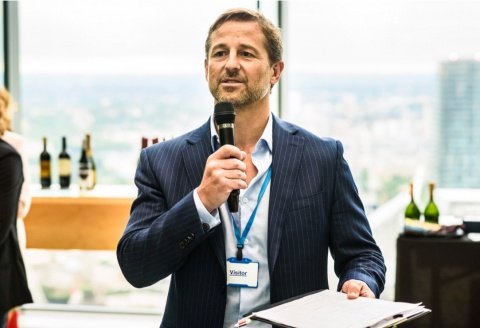 Enhancing material recovery and reuse—particularly of metals—is essential to advancing the UK’s circular economy and strengthening our national resilience.
Enhancing material recovery and reuse—particularly of metals—is essential to advancing the UK’s circular economy and strengthening our national resilience.
According to the Deloitte 2025 Circularity Gap Report, the UK remains largely linear with only 7.5 per cent of materials cycled back into the economy, leaving a staggering 92.5 per cent Circularity Gap. This highlights the urgent need to invest in domestic recycling and recovery infrastructure. With the right strategic interventions, the UK could nearly double its circularity rate to 14.1 per cent, improving resource security, reducing dependence on volatile global markets and accelerating progress toward a sustainable, resilient economy.
Why Material Recovery Matters
Global geopolitical tensions are escalating, with direct consequences for the UK’s supply chain security, industrial competitiveness, and progress toward energy transition goals. China’s dominance over critical raw materials is particularly sensitive – accounting for over 80 per cent of global supply for many key inputs – and has been reinforced by recent export restrictions on gallium, germanium and graphite, imposed in response to Western sanctions. These actions expose the UK’s vulnerability, especially given our limited domestic refining and processing capabilities.
Similarly, the war in Ukraine has severely constrained access to metals such as palladium, aluminium, nickel, and titanium – markets where Russia was previously a dominant supplier. Sanctions and disrupted logistics have driven up global prices and introduced volatility across supply chains.
Without strategic investment in domestic recovery, recycling, and urban mining, the UK risks being sidelined in a new era of resource nationalism. Strengthening circular supply chains is no longer just an environmental imperative – it is a matter of economic resilience and national security.
The UK is increasingly reliant on imported metals and critical minerals to sustain key industries – from clean energy and defence to consumer electronics. Today, around 80 per cent of raw materials are imported, with minimal domestic capacity for recovery or refining. This marks a steep rise from a more balanced position in 2000, with dependency accelerating further by 2013 and continuing through to 2025. Critically, the UK is now 100 per cent dependent on imports for 26 of 34 critical materials, and over 90 per cent reliant for six more, exposing the economy to serious supply chain risks.
Meanwhile, valuable secondary materials—such as metals, plastics, and electronics—are routinely exported for processing overseas. This results in substantial economic leakage and the forfeiture of the UK’s role in a growing multi-billion-pound circular economy.
The consequences are already visible. A shortage of recycled inputs like lithium, cobalt, copper, and rare earth elements is increasing costs and slowing the rollout of electric vehicles, wind turbines, solar panels and energy storage. Supply constraints and volatile global markets are disrupting project timelines and investment certainty across the green technology sector.
Domestically, 1.6 million tonnes of e-waste annually continue to be landfilled or incinerated , contributing to emissions, pollution and the unnecessary depletion of finite resources. These practices undermine the UK’s net zero ambitions and climate targets.
Just as importantly, the lack of a robust circular infrastructure is holding back innovation, job creation, and industrial competitiveness. Thousands of potential green jobs in recycling, refurbishment and materials innovation have been lost to overseas markets due to underinvestment and fragmented policy frameworks.
In contrast, a strong domestic recovery system would allow the UK to retain critical materials from end-of-life products, reduce exposure to geopolitical shocks and build strategic resilience. From a business perspective, recovered materials – such as aluminium, copper, lithium, and rare earth elements – can retain 95–99 per cent of their original value, and can be recirculated with a fraction of the environmental impact of virgin extraction.
A national commitment to scaling material recovery is not only a sustainability imperative – it is an industrial strategy for resilience, competitiveness, and economic security.
Policy Reset
Small and medium-sized enterprises (SMEs) are already leading the way in developing scalable technologies for urban mining, electronic waste processing and advanced separation methods capable of recovering metals from high-grade, low-grade and mixed sources. But despite this progress, significant barriers remain. Chief among them are inconsistent access to feedstocks, limited investment in recovery infrastructure and outdated regulatory frameworks that still prioritise disposal over recovery.
The UK Government now has a vital opportunity – to support the development of robust material recovery infrastructure. But to do this effectively, we must shift the narrative. It’s time to stop framing this conversation around “waste” – particularly electronic waste – and start recognising the immense value of secondary material sources. These materials have already been mined. The opportunity lies not in extracting more, but in recovering and reusing what we already have.
Last month, I was therefore pleased to accept an invitation recently from Minister Mary Creagh MP and the UK Circular Economy Taskforce to participate in a workshop focused on exploring the barriers and opportunities within the UK. I was joined by a diverse group of experienced and passionate stakeholders – from charities and government bodies to large enterprises as well as fellow SMEs which are seen as essential partners in this transformation.
The way forward
- Clearly, we need a mindset shift – one that integrates and scales value chains already within our reach. The technology exists. What we need now is a policy environment that accelerates clean technology and stops holding the industry back with legacy thinking.
- Extended Producer Responsibilities (EPR) need prioritising and strengthening with enforced EPR schemes to drive product designs that support disassembly and recyclability, ensuring more materials are recovered and reintegrated into the supply chain.
- We need secure supply chains through domestic recovery. By recognising recovered metals as strategic assets and embedding domestic recovery efforts into the UK’s critical minerals strategy, would ultimately drive more attention and reason to develop innovation clusters, where SMEs, researchers and manufacturers can co-locate, collaborate and accelerate the commercialisation of recovery technologies.
- We need a more open and transparent market for access to the secondary materials with clear standards and procurement incentives that prioritise recovered over virgin materials – particularly in public sector projects like defence, infrastructure and renewable energy.
A circular economy is not just an environmental imperative – it is an economic and strategic one. By keeping valuable materials within our borders and reintegrating them into domestic manufacturing, we will reduce our exposure to global supply chain risks, create green jobs and strengthen national security.
Andrew Gomarsall MBE is Executive Director of technology lifecycle and zero to landfill recycling specialists, n2s. He is also a founding partner of Bioscope Technologies which is developing industrial scale biorefining processes using naturally occurring bacteria for sustainable recovery of strategic metals and rare earths from the printed circuit boards of end of life enterprise ICT equipment.




